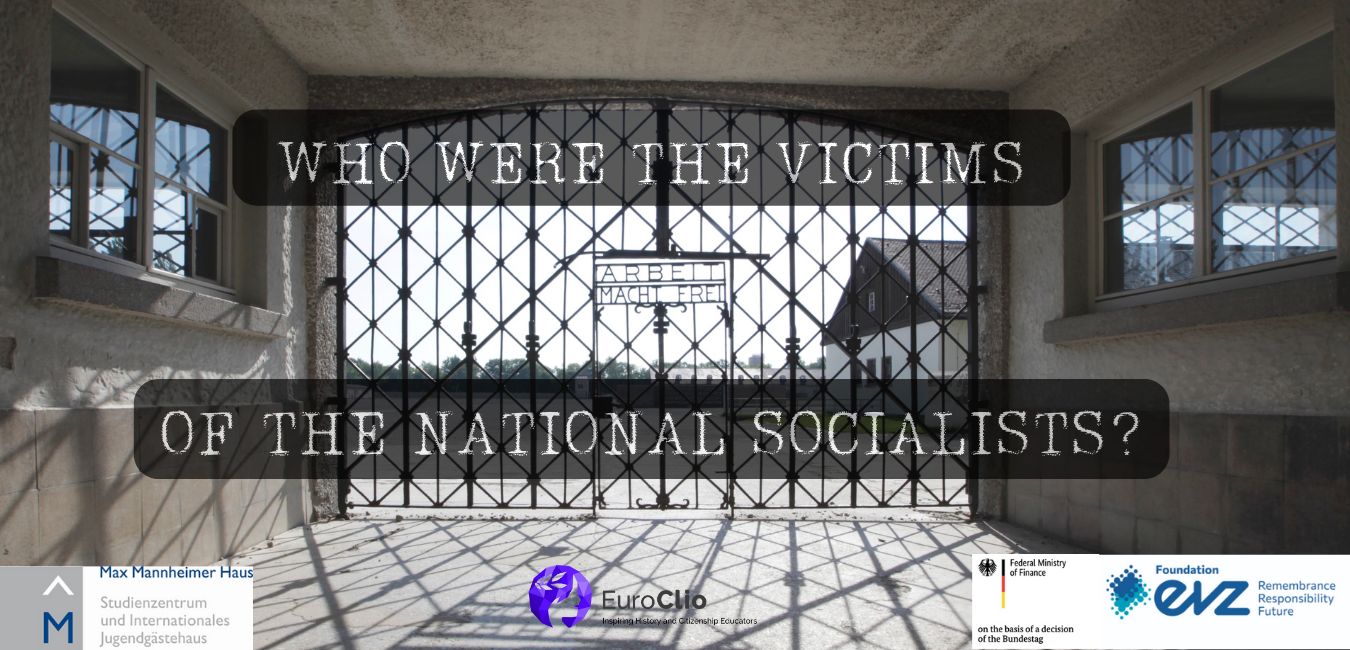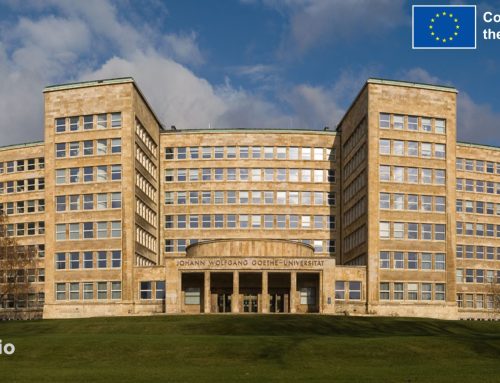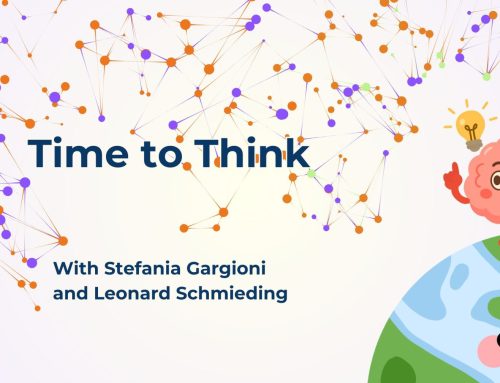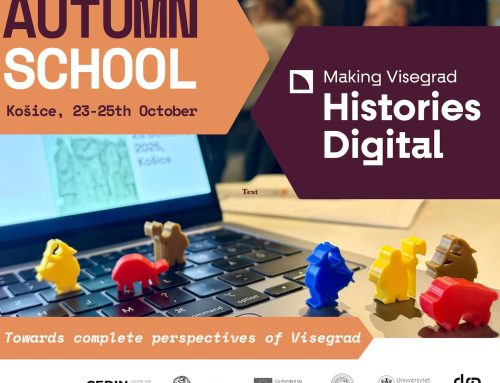An International Experience for Danish Students – “Who Were the Victims of the National Socialists?”
In this article, Mirela Ismaili Redžić of Team Denmark reflects on her experience working with her students on the project “Who Were the Victims of the National Socialists?”.
I’m on the way to the plane with my student, Aziza Meqdad, with an atmosphere of excitement in the air… Aziza tells me how strange the other students think it is that she is travelling alone with her teacher, but that she herself is really happy. She doesn’t quite know what to expect, but she is very excited about this new experience. We are on our way to Vilnius to attend the 29th Annual Conference of EuroClio, the European Association of History Educators. Aziza is travelling as a student, with EuroClio welcoming students to their Annual Conference for the first time. And my student is there – I’m so proud of that! I have been following EuroClio’s work for the 17 years that I’ve been a teacher. This is the first Annual Conference where I’m joining myself, and yet I’m helping to make history for EuroClio by bringing a student. It’s a great feeling… It’s also a great feeling that the student I’m bringing is a refugee from Syria, expanding her horizons to yet another dimension. She was not chosen for this reason at all, however – she was simply the only one who volunteered to travel alone with her teacher for four days to an unknown place for new experiences.
At the conference, Aziza will meet a student from Team Slovakia, a student from Team Bosnia and Herzegovina and eight Lithuanian students from local high schools. Together with Aaron Peterer from Austria and Paula O’Donohoe and Monika Lendermann from EuroClio, they will develop a new Place-Based Learning (PBL) project. PBL is a method of using places and monuments from the local environment in teaching. We have used the PBL method in a project with our students entitled “National Socialism – Then and Now”. This was a great project where our school principal, Lars Amdisen Bossen, who is also a history teacher, and myself, were allowed to develop a project according to our own wishes and within the budget framework managed by EuroClio. We were able to organise fun excursions and invite speakers to the school for the 30 students following our school’s international programme throughout 2022.
The overall theme was National Socialism and preventing a repeat of history. EuroClio wanted us to work with values set out in the Reference Framework of Competences for Democratic Culture, or “butterfly model”, by the Council of Europe:

These are good values that we could easily see ourselves working with. As there are many competences, we have chosen to concentrate on empathy and openness towards others in our society. To see the full programme, you can view the framework below or a more detailed PowerPoint here.
Here is a description of a few of the parts of the programme that helped to form the students’ overall understanding of National Socialist ideology and engage with questions such as: can it happen again today? What can the students themselves do to prevent the alienation of others, a process that ultimately led to the Holocaust and genocide?
One of the initiatives that helped students understand the impact of their own actions on the people around them was the inclusion exercise. The students were asked to write down on a piece of paper the last time they felt excluded. They had to describe how they had felt and what had triggered this. Later in the programme, we often came back to the concepts of inclusion and exclusion.
In addition, we had an online workshop with Aaron Peterer from Austria about monuments and street names in the world that either commemorate the Holocaust, genocide and resisters to Nazi ideologies, or conversely honour the perpetrators of such atrocities (even though you would not think this is possible in today’s world…). Aaron also talked about “invisible” monuments, the ones that should be there but aren’t, and what this means for our collective understanding of history. All in all, his presentation was an eye-opener on how countries use or misuse monuments and street names to honour certain narratives.
Another initiative was a screening of the film The Wave (Die Welle, 2008). The film helped students understand that processes of social exclusion can easily happen again today and are not too far back in the past and therefore distant from us. The freedom to be different from others is part of a democratic society, and something we must protect if we want to maintain it.
I myself gave a talk about my personal history during the 1990s wars in the former Yugoslavia and when and how I became a refugee – that is, someone alienated. Was it when our house was burned down but my family stayed in the city for just over a year afterwards? Was it when I fled with my mother only 35 kilometres away from the city but to the other side of the border, where I wasn’t allowed to go to school even though we lived there for 15 months? Or was it when we arrived in Denmark and had to start all over again with a new language and culture? The right to go to a regular Danish school or be employed in a regular Danish workplace was not a given. When does one stop being a refugee? When you get Danish citizenship? When you have learned the language well enough? When you are “integrated” enough? When are you integrated enough to not be alienated, and so on?
In addition, the students went on two field trips. One was to Esbjerg to visit the old cemetery. Here, the students saw the graves of German soldiers lying only a few hundred metres away from those of Allied soldiers. Our guide told us the story of two soldiers from opposing sides who died in an aerial battle. A British and a German soldier who died fighting each other were buried just a few hundred metres apart, 15 minutes’ walking distance. The students also saw a number of children’s graves. These were German refugees who did not survive the harsh conditions of being on the run. Another paradox – the Germans held power in Denmark during the occupation, with all that this implied of the “good life”, but shortly after the war ended, they were refugees in difficult conditions. In a way, this again emphasised that anyone can become a refugee from one day to the next – so what is it that alienates a person and when do they stop being a refugee?
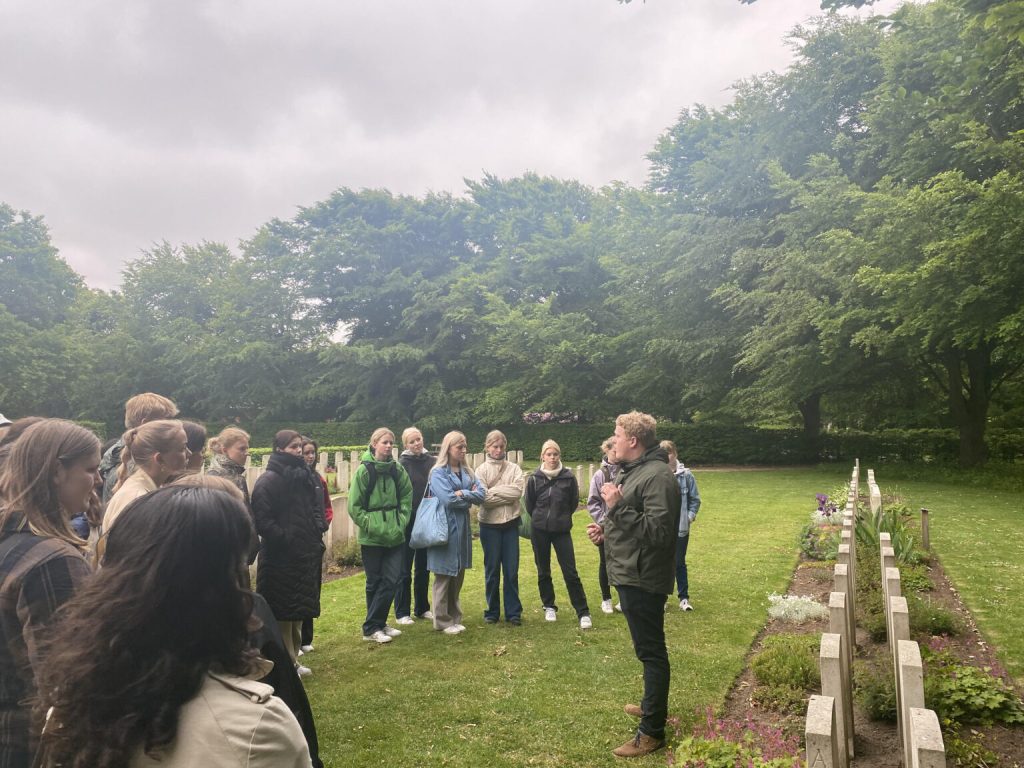
The second excursion was to the newly opened FLUGT Museum, which focuses on refugee experiences. We started with a guided tour around an old refugee camp which housed up to 36,000 Germans. It was an excellent guided tour which included a role-playing scenario – we would highly recommend it. Then, the students entered and explored the museum on their own. The museum has an exhibition about many different refugees and their fates, giving voice to numerous refugees throughout time and moving the students. In May 2023, the museum received international recognition and an award for exhibition of the year – it’s definitely worth a visit.
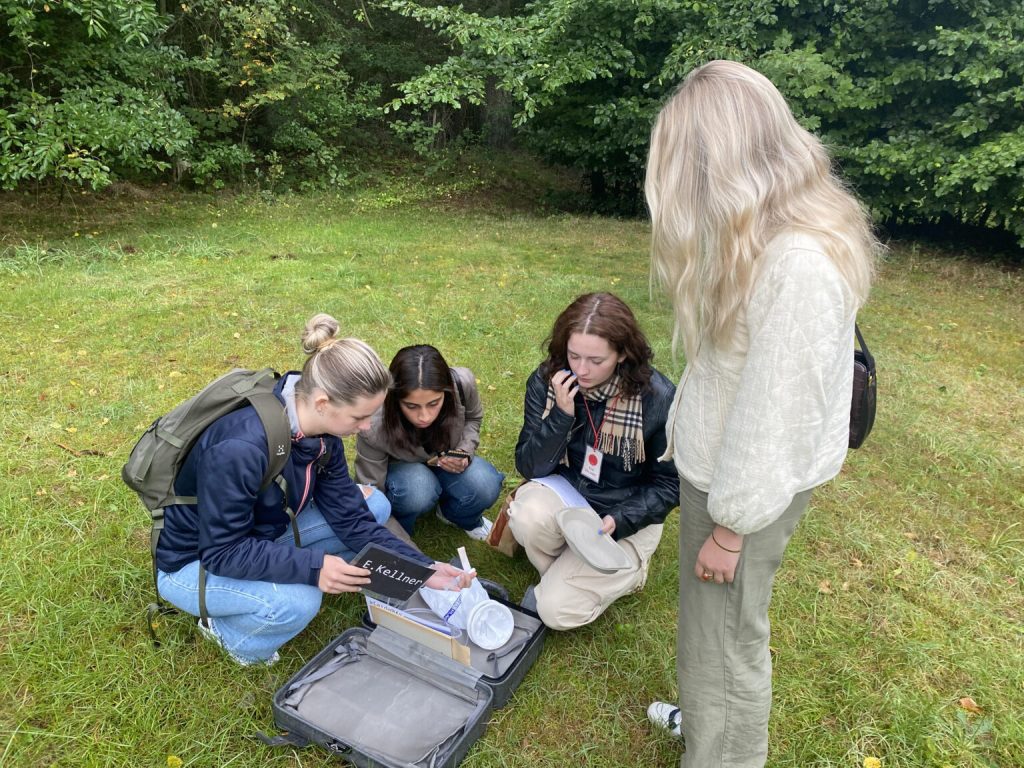
In addition, students had the privilege of hearing an expert on Auschwitz, Peter Langwithz Smith, tell selected moving stories of children and women on their way to the gas chamber and how a process of alienation enabled the Germans to do this.
Finally, the students created podcasts on specific topics from the project and presented it to two 8th grade classes. This project, far from being trivial, was a way to help them actively work on a topic that they had begun exploring.
Throughout this journey, Lars Amdisen Bossen (our school principal) and I learned of the many possibilities and methods of carrying out this project. We have chosen this one and hope that you can be inspired by it, but also realise that there are so many other options and far too little time to implement them in everyday teaching. In this case, it was only possible to find the time for such an extensive project because we used two of the students’ multidisciplinary programmes. But there is no doubt that both the students and ourselves have enjoyed this opportunity, and that is why we are sharing it with you here.
As the project was international with students and teachers from Belgium, Bosnia and Herzegovina, Slovakia, Spain together with our team from Denmark, each of these countries carried out a PBL project in their local area. We ended up with five very different projects, which we presented together to the participants of the EuroClio Annual Conference in Vilnius. Having received great feedback on the results of the student workshop, we are proud of the project and hope to inspire others to carry out similar initiatives to the one we have shared in this article, or to reach out to EuroClio and work on some interesting projects with the organisation.
As a final but important detail, it is worth mentioning that Aziza is still in contact with the students she met in Vilnius and that they are making plans to visit each other in the future!
If you have any questions, please feel free to write to Mirela at mirela@redzic.com
This article was originally published in Danish on the website of the Danish History Teachers’ Association and can be read here

